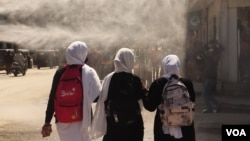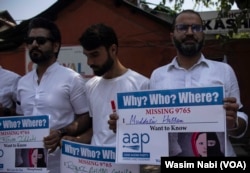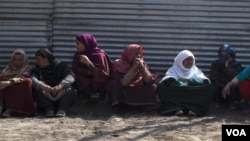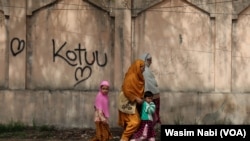Authorities in Jammu and Kashmir are facing criticism over their response to a stunning increase in the number of women reported missing in recent years.
Data provided by the federal government on July 26 in response to an inquiry by an opposition member of India’s Parliament disclosed that 9,765 women and girls were reported missing from their residences in the union territory between the years 2019 and 2021.
That marks an almost three-fold increase over the 3,300 women and girls reported missing in Jammu and Kashmir during the previous three years, according to a 2019 report from the National Crime Records Bureau.
Even within the earlier timeframe, the number of reported disappearances rose steadily from 943 in 2016, to 1,044 cases in 2017, and 1,335 cases in 2018.
The problem of disappearing women is not confined to Jammu and Kashmir. Data provided by from National Crime Records Bureau in response to the same parliamentary query showed that more than 1.31 million females were reported missing nationwide during the years 2019 to 2021.
In response, the federal government has introduced a range of measures to strengthen women’s safety. These include the establishment of specialized investigative units to address offenses such as rape, dowry death, abduction, human trafficking and domestic violence.
Not all the stories of disappearances have unhappy endings. The parents of 18-year-old Hina, whose name has been changed to protect her privacy, suffered through three days of anguish after their daughter failed to return home from school one day in October 2021. She was finally located at the home of a relative.
But for other families, the search ends in tragedy, as it did for Rouf Amin Najar, the brother of 14-year-old Milad Najar, who went missing from her Srinagar neighborhood last year. Her lifeless body was pulled from the Jhelum River a week after she disappeared.
Similarly, the family of 27-year-old Ruksana Ali underwent a month of anguish when Ruksana disappeared January 18, 2021. The family tirelessly searched for her until her body was retrieved from the Jhelum River about 30 days later.
As is often the case in Jammu and Kashmir, at the requests of the families no autopsy was performed on either of the bodies pulled from the river, leaving the causes of both deaths uncertain.
In a demonstration last week, scores of supporters from the Aam Aadmi Party (AAP) gathered in Srinagar to highlight the issue of missing women and girls, demanding action from authorities.
“We have gathered here to seek answers about the missing women from all districts of Jammu and Kashmir Valley. Where are they? Who has abducted them?” asked AAP Youth President Hakim Rizwan Illahi.
Illahi contrasted the federal government’s well publicized campaign in support of young women, which bears the slogan “Educate the Girl Child, Save the Girl Child,” with the reality of missing women. The government “may talk about empowering and safeguarding girls everywhere, but we demand to know where our mothers and sisters have disappeared,” Illahi said.
Another organizer of the protest was Shamima Firdous, a former chairperson of the State Women’s Commission and a member of the women’s wing of the regional opposition party National Conference.
Firdous raised disturbing possibilities about the fates of the missing women, including concerns about trafficking, violence or forced marriages. She urged the government to conduct an impartial investigation into the disappearances and hold the perpetrators accountable.
Iltija Mufti, daughter of Mehbooba Mufti who served as the last chief minister of Jammu and Kashmir from 2016 to 2018, also criticized the government for failing to trace more of the women.
“It is a huge number, this is worrying,” she said in an interview.
Mufti said the number of disappearances reflects a failure on the part of the current regional government to address the issue effectively, arguing that the data suggests minimal efforts have been made to locate the missing women.
VOA approached three regional government departments seeking a statement about their efforts to account for the missing women but received no replies.
While the authorities have offered no clear reason for the rising number of disappearances, some possible explanations have been put forward by Qurat ul Ain Masoodi, chair of an NGO dedicated to women’s empowerment and other social issues known as AASH – Hope of Kashmir.
“One of the contributing factors to this phenomenon is the significant influx of migrant workers into Kashmir over the years,” she said. “Many girls are eloping with these migrant workers, but a considerable number of cases go unreported, concealed by families.”
Masoodi also identified poverty as a factor driving the rise in some of the cases.
“Economic constraints push some women to leave their families without informing them, seeking earning opportunities elsewhere,” she said.







